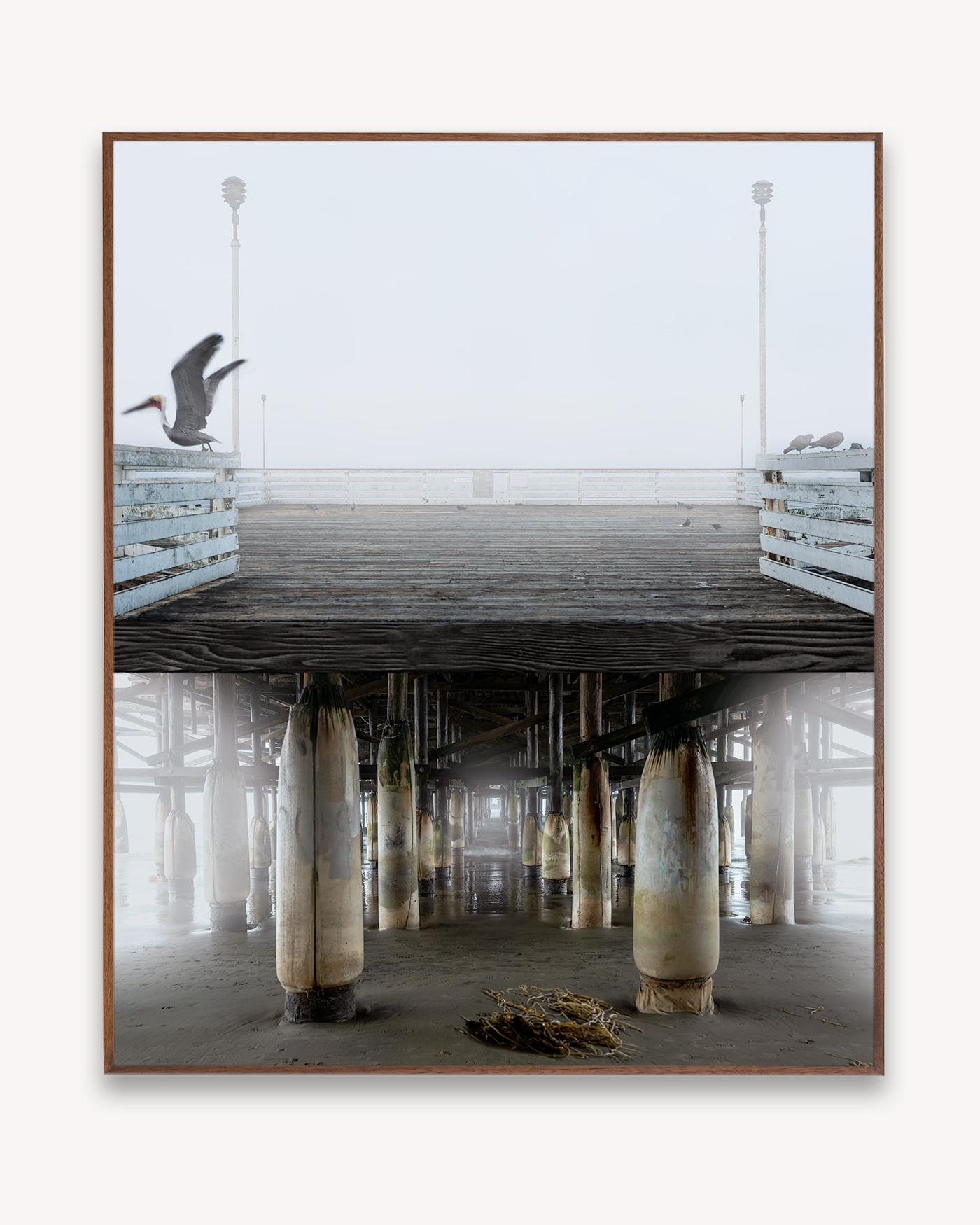
25 Jan The Light Thief: A Self-aware Modernist
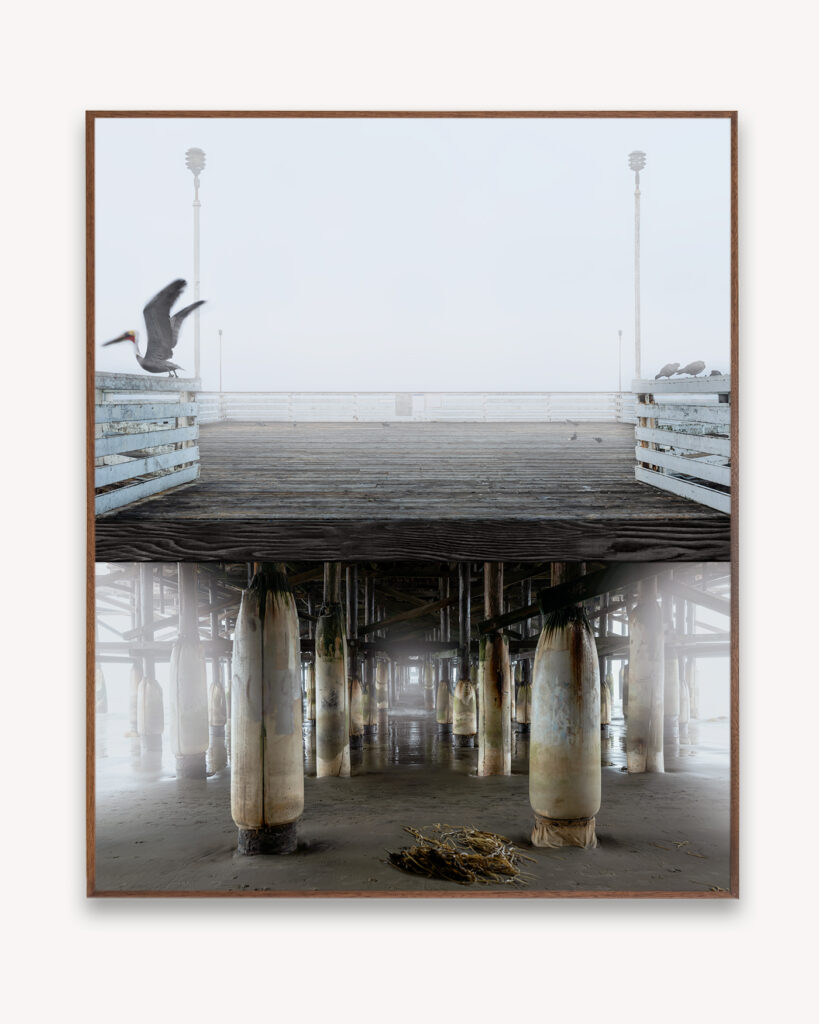
by Meg Linton
“Photography is so much about cultivating a skill of sustained observation.” – Amir Zaki
Recently, a colleague, Edward Cella, recommended I go visit the studio of Amir Zaki, a photographer he has worked with over the years located in Huntington Beach. The studio is hidden in a nondescript business complex amongst wood finishers, commercial printers, and a jet ski repair shop. Zaki met me at the door and walked me through the office which houses a small family business making yoga props and led me to the back workshop area where he had a stunning new series of photographs called On Being Here pinned to the wall.
In 2021, Zaki made pre-dawn pilgrimages to piers peppering the Southern California coastline to capture their awakening to a new day. Oftentimes, he would be the only one out there with the birds, sand, and sea swirling about these monuments of industry. At first glance, the piers are just that, lovely pictures of something familiar, nostalgic, a known quantity. However, the more I looked, the more I saw. These desolate, lonely photographs were slightly off kilter. The light wasn’t matching up between top and bottom. What Zaki created was an upstairs/downstairs effect as if the structure on deck is of one world and the pillared warrens below were a portal to another.
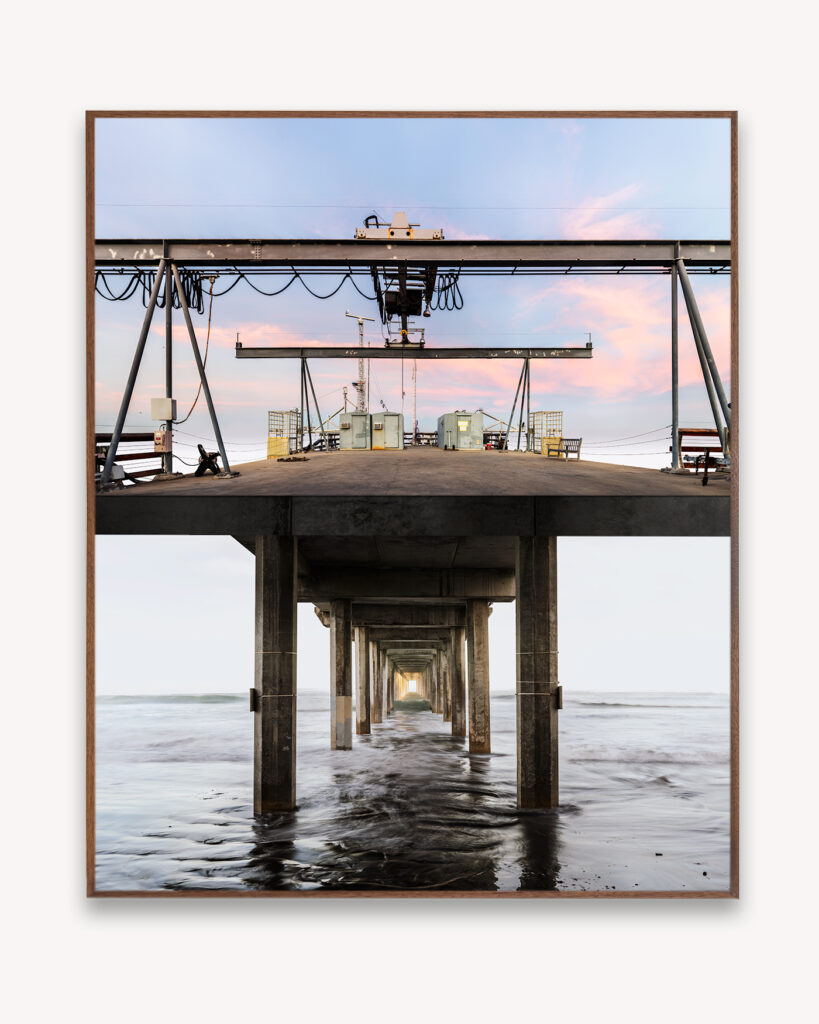
Zaki obtains this effect with his process, which he has described in an interview titled “Stealing Light” with Artworker Corrina Peipon in his latest publication Building + Becoming, co-published by X Artists’ Books and DoppelHouse Press. Zaki shares that over a period of an hour he “. . . [takes] an array of dozens of individual high-resolution digital images of a particular view or scene and [stiches] them together in post-production to create a single, seamless image that is incredibly high-resolution and sharp, surpassing the detail and resolution of any film based processed.” This means, when he sets up his camera to shoot the top or bottom portion of the pier, the upper left portion of the image has a different angle of light hitting the subject than the lower right portion. The effect is extremely subtle and disquieting. It’s as if the breath of the photo is moving in two different directions.
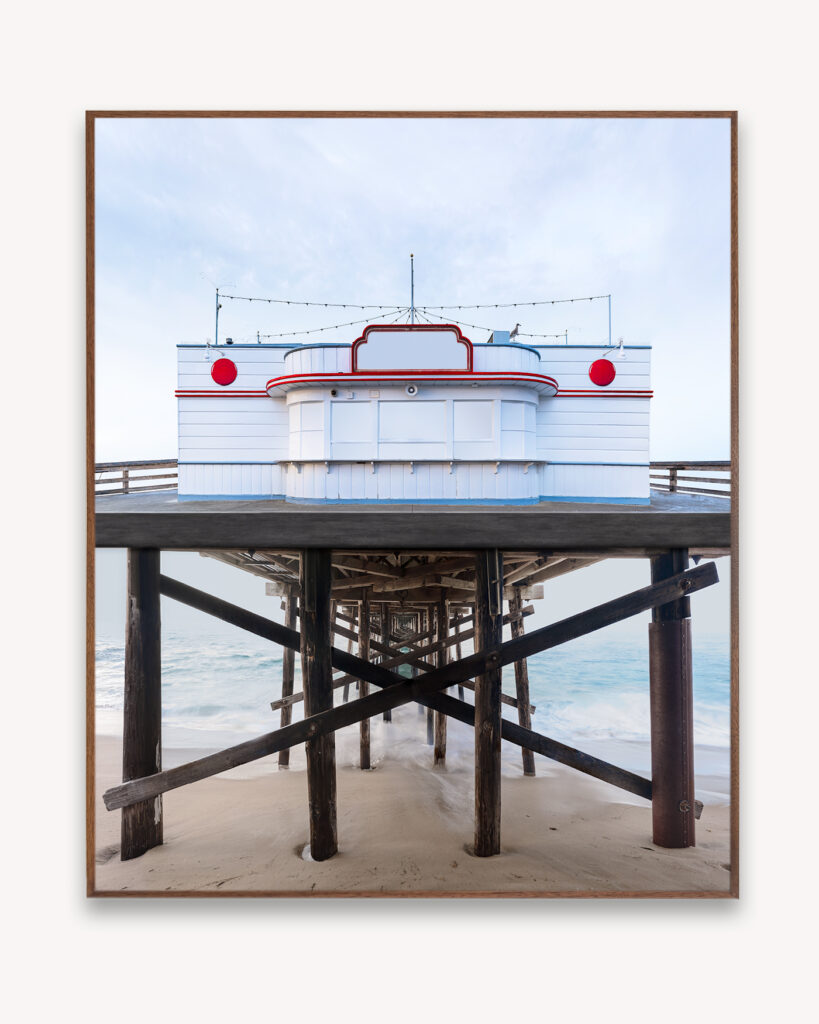
The titles of the individual On Being Here photographs reference the history of the piers’ losing battles to salt, storms, fires, and economic downturns, and hint at their community’s love and concern in rebuilding them or not. The photos posted here are called, “Built in 1927. Renovated in 1936,” “Built in 1915, Renovated in 1988,” and “Built in 1906. Damaged in 1998.” Zaki doesn’t reveal the location of the piers because these images aren’t about the specificity of place. They are more about observation, evolution, and recovery. Interesting work to make during a pandemic.
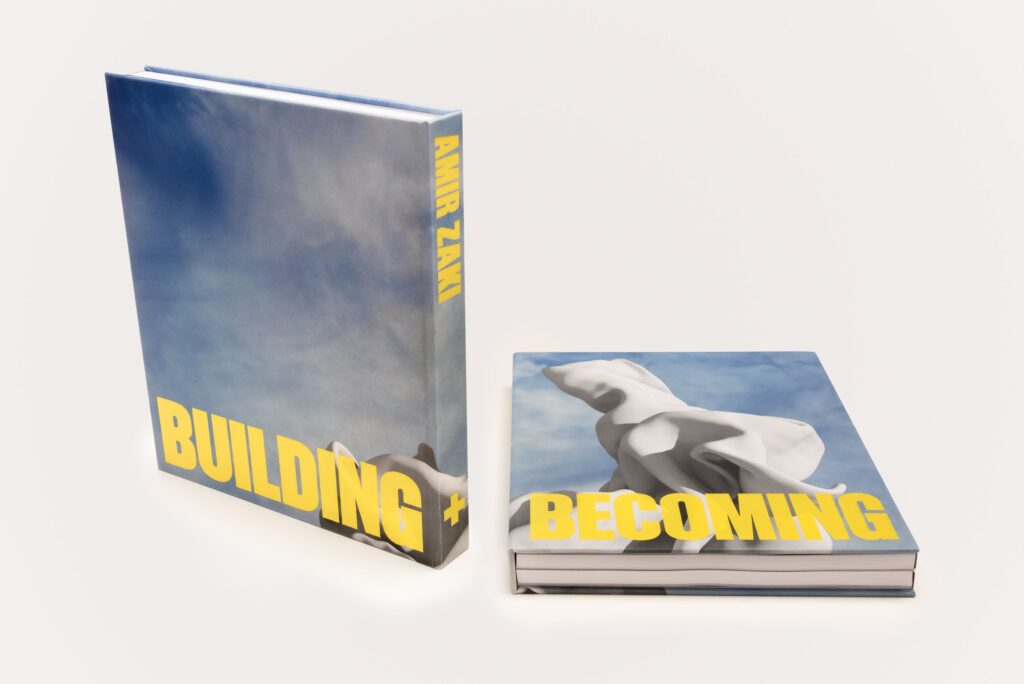
For this studio visit, the artist had only one body of work on the wall, but on the table was the preview copy of Zaki’s new publication featuring work made between 1999-2021. Building + Becoming is more than a coffee table picture book, it is an experience. Working with graphic designer Chris Svennson out of Los Angeles, Zaki has created a stunning publication that echoes the persistent duality in his life and work and challenges readers by the book’s distinctive structure.
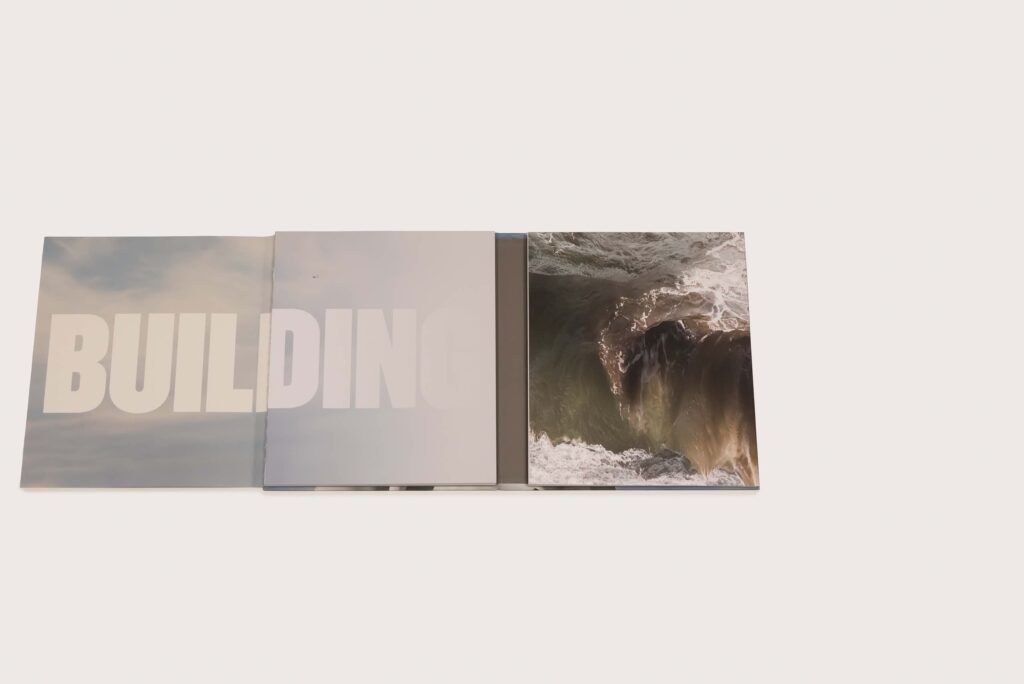
In the interview with Peipon, Zaki explains “In this book, the two halves can be viewed independently or in relationship to one another as a four-page spread, creating many more relationships between images than I could have possibly intended. There is no real front or back. There are three spines instead of one.” He goes on to say that the book is somewhat autobiographical and “The left half of the book opens the way books in English do, reflecting my mother’s native language and that half of my DNA. The right half of the book opens the way books written in Arabic do, reflecting my father’s native language and the other half of my DNA.” While this format makes reading the informative interview with Peipon and the more philosophical essay “Addition by Subtraction: Amir Zaki’s Idea of the Whole” by Jennifer Ashton and Walter Benn Michaels a bit of a chore, it is worth the effort. Flipping through the images puts the reader in the role of curator and allows for the contrast of different bodies of work to reveal the sum of this artist’s way of seeing silence in a revolving world.
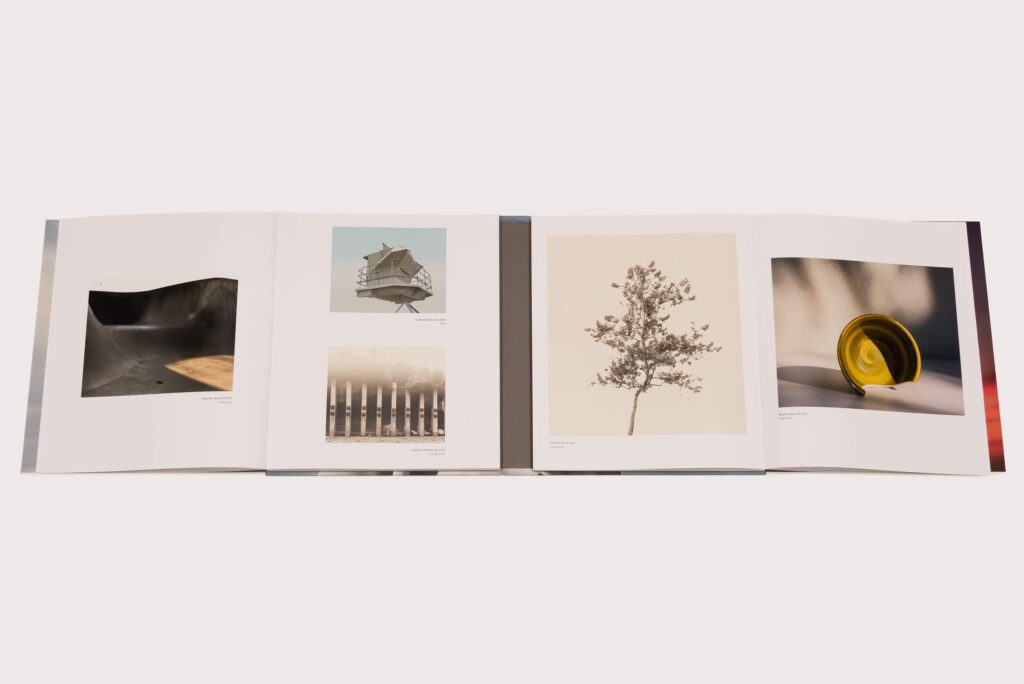
To learn more about Amir Zaki visit his website, order his book here, and keep an eye out for exhibitions of his work.
Meg Linton is an independent visual arts curator, writer, and documentary film producer. She is best known for the exhibitions, programs, and publications she organized during her tenure as the Director of Galleries and Exhibitions at the Ben Maltz Gallery, Otis College of Art and Design in Los Angeles; Executive Director of the Santa Barbara Contemporary Arts Forum; and Curator of Exhibitions at the University Art Museum at CSU Long Beach. You can find her on IG @meg_linton



Connie Glenn
Posted at 17:58h, 30 JanuaryFantastic studio visit Meg. I am crazy about Amir’s work. I have only seen it once before, several years ago, but was equally impressed. Wish I we’re still organizing shows. He should have a major retrospective!
Why don’t you send some images to Mary-Kay?
Connie
Amir Zaki
Posted at 12:43h, 09 FebruaryThank you, Connie! I really appreciate it.
Amir
Tom Dowling
Posted at 13:51h, 08 FebruaryGreat review Meg, I saw his work a few years ago at OCC’s Doyle Arts Pavilion. I’ll be ordeing the book!
Amir Zaki
Posted at 12:44h, 09 FebruaryThank you for your support, Tom.
Amir